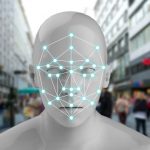China and NSW Are Increasingly Targeting ‘Future Criminals’

So, what does the far western province of Xinjiang in China have in common with the state of New South Wales? Answer: authorities in both regions are cracking down on future crime, in so far as both are employing policies of predictive policing and detaining people before they offend.
Human Rights Watch (HRW) reported on February 26 that Chinese authorities are currently deploying and expanding a highly pervasive data surveillance system in Xinjiang. The Integrated Joint Operations Platform (IJOP) aggregates data and flags any behaviour the system identifies as suspect.
The IJOP integrates information collected from a range of technologies, including an immense network of CCTV cameras with facial recognition and infrared capabilities and WIFI sniffers, which collect identifying addresses from computers and smartphones.
Information is also gathered at an increasing number of police checkpoints, as well as data systems that store licence number plates and citizen ID cards. Officials also visit people’s homes and fill out forms on smartphone apps, which are submitted to the IJOP.
According to HRW, behaviours that the system identifies as suspicious include an individual suddenly buying more fertilizer than usual, a family storing large amounts of food in their home, or a person who is in possession of a large number of books.
Re-education gulags
If the IJOP flags any behaviour, officials are supposed to act upon this information on the same day. And on inspection, those that “ought to be taken, should be taken.” Two sources told HRW that the IJOP computer generates lists of individuals to be rounded-up by police.
These suspects are then sent to political re-education centres, where they’re held in indefinite detention, without charge or trial. Detainees are then subjected to a secretive investigation. They can later be sentenced to prison or be put through further instruction in Communist doctrine.
This Orwellian system was initiated in Xinjiang in August 2016, as part of the Chinese Communist Party’s (CCP) “Strike Hard” campaign, which seeks to target terrorist threats, but also, takes aim at those not toeing the party line.
Powerless in their homeland
Xinjiang is home to 11 million predominately Muslim Uyghurs. The CCP began its increasingly oppressive occupation of the region back in 1949. After years of Beijing’s encouraged migration, Uyghurs make up 45 percent of the population, while Han Chinese now account for 40 percent.
Following a peaceful protest by Uyghur people that turned into a violent clash with police in the Xinjiang capital of Urumqi in 2009, Chinese authorities further cracked down. And this led to a series of violent reprisals carried out by Uyghurs across the country over the period 2013 to 2014.
Whilst Beijing continues the narrative of a rising terrorist threat in the region, commentators blame the reprisals on the harsh repression Uyghurs suffer under Chinese rule. Authorities have enforced cultural restrictions against growing beards, wearing veils in public, and religious fasting.
Secretary general of the World Uyghur Congress Dolkun Isa told Sydney Criminal Lawyers® last March that Chinese authorities have recently implemented an intensive network of “police convenience centres” in the region.
These pseudo-police checkpoints have heavy camera surveillance and carry out 24 hour guard patrols.
NSW predictive policing
Cut to present day New South Wales, which is seemingly a world away from far western China. However, similar policing tactics and surveillance policies are being employed right here.
Take the Suspect Targeting Management Plan (STMP). It allows NSW police officers to place recidivist offenders, as well as people who’ve never been convicted of a crime, but are merely suspected of being at risk of committing future crimes, on a list for targeted intensive policing.
Those on the secretive list are repeatedly stopped and searched by police. And they’re also subjected to regular home visits from officers regardless of which offence, if any, they’ve previously committed.
A report released in November last year found the program, which was implemented in 2000, is disproportionately targeting youths. Data examined from ten local area commands over the year 2014-15 showed that 48.8 percent of STMP targets were under the age of 25.
The researchers also found that the largest single group subject to the program were Aboriginal and Torres Strait Islander people making up 44 percent of all individuals. This is despite Indigenous people accounting for only 2.9 percent of the NSW population, according to 2016 Census figures.
Future crime incarceration
The NSW government passed the Terrorism (High Risk Offenders) Bill last November. This enables adult offenders who are deemed to pose a “risk of committing a serious terrorism offence” can have their prison sentence, or parole period, extended for a period of three years indefinitely.
But, these laws don’t just apply to convicted terrorists. Offenders whose crimes are classed as occurring in a “terrorist context” also come under their reach. They can even apply to inmates who’ve merely associated with those who’ve advocated support for terrorist activities.
In February, NSW premier Gladys Berejiklian said she wouldn’t rule out extending this regime to youth offenders. She made the remark as she was announcing the government was setting up a new countering violent extremism unit within the state juvenile justice system.
Under this new arrangement, young offenders deemed to be a national security threat will receive intensified communications monitoring, as well as undergoing deradicalisation programs.
Mass surveillance down under
And a number of surveillance systems have been implemented at the federal level over recent times, which have all the hallmarks of the Chinese IJOP big data system.
In October 2015, the federal government’s metadata regime came into play. It requires telcos and ISPs to store their customers’ metadata for a period of two years. And the system allows 21 law enforcement agencies warrantless access to this personal information.
While in October last year, the heads of all states and territories signed onto the federal government’s National Facial Biometric Matching Capability, which is a database that allows police and security agencies to match citizens’ driver licence photos with CCTV footage in real time.
Indeed, it seems that regardless of whether its Communist China or democratic NSW, authorities are increasingly applying new technologies in an intrusive manner, whilst calling on law enforcement agencies and corrective services to undertake the dubious task of predicting future crimes.








